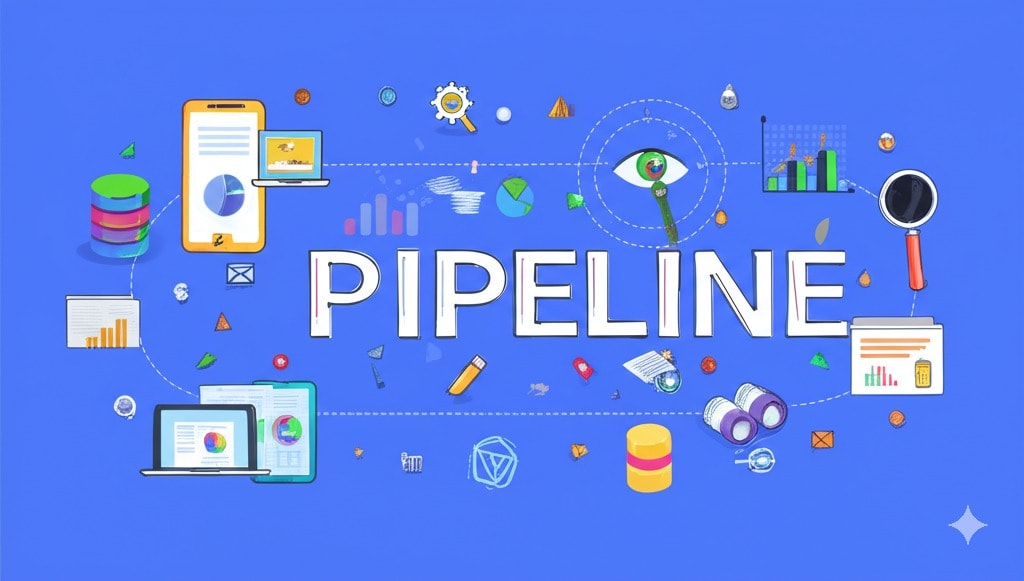Building a Data Strategy for Better Customer Service: Lessons from the Wilmar Workshop

In today’s data-driven world, having a good product or service is no longer enough. To stay ahead, companies need to understand their customers—and data is the secret sauce that makes that possible. 🍝
Recently, I had the chance to attend a workshop hosted by Wilmar, a company specializing in manufacturing and distribution. While their “customers” are actually distribution partners (rather than end users), the lessons we learned apply to almost any business looking to use data to level up their customer service.
Here’s a recap of the key takeaways from the session, broken into four powerful themes:
1. Data Architecture: Laying the Foundation 🏗
We kicked things off with a deep dive into data architecture—essentially the blueprint for how data flows through your organization.
If you’re building any data-based solution or product, this is where it starts. But it’s not just about infrastructure. You need to ask yourself the right question:
💬 “What does my business need?”
As IT professionals, it’s tempting to jump straight into tools or frameworks. But building a successful data strategy starts with understanding the business context. What does Sales need? What are the KPIs? What decisions will be made from this data?
Only then can we identify the core priorities for the architecture—what matters most, what’s urgent, and what can wait.
We also walked through the process of turning an idea into a real solution:
- Choose a data model that fits the problem
- Understand what data you have and what you need
- Check if your current state can realistically reach your target
- Identify gaps, validate assumptions, and sketch the “data journey”
- Do some hands-on manual processing to get a feel for the landscape
- Align results with stakeholder expectations
- Finalize your business model and architecture
- Document everything—and keep it updated!
2. Data Model & Processing Flow: ETL in Action 🔄
Next, we explored one of the most common acronyms in data workflows: ETL.
- E – Extract: Pulling data from various sources—databases, files, APIs, or even spreadsheets.
- T – Transform: Cleaning and reshaping the data to make it consistent and usable.
- L – Load: Saving the processed data into a data warehouse, database, or data lake for access.
👉 Important note: ETL doesn’t generate new data—it organizes and prepares the data you already have.
We also covered some key storage terms:
- Database – Structured, transactional storage.
- Data Warehouse – Optimized for analytics and reporting.
- Data Lake – Flexible, unstructured storage for massive volumes of raw data.
The final step? Processing and visualization—turning rows and columns into dashboards and reports that speak to the business.
3. Dashboards & KPI: From Data to Insight 📊
The speaker shared real dashboard metrics from Wilmar’s operations back in 2015, showing just how powerful KPIs can be when backed by data.
Through these dashboards, we saw how data helps:
- Identify business trends
- Highlight operational bottlenecks
- Inform strategic decisions
KPIs weren’t just numbers—they told a story about what was working and what needed improvement. This is where the value of clean architecture and solid ETL truly shines.
4. Data Governance & Security: Protecting the Crown Jewels 🔐
Last but definitely not least, we explored data governance and security—arguably the most important topic in today’s digital landscape.
In a data-driven company, data is your most valuable asset. Guard it like treasure.
The two pillars:
- Authentication – Who are you?
- Authorization – What are you allowed to see or do?
You need clear, enforceable policies about who can access what, when, and how. Otherwise, you risk leaks, breaches, and costly mistakes.
We also discussed the five pillars of Data Governance:
| Aspect | Purpose |
|---|---|
| Data Usability | Who can access which data, when to use it, and when to back it up |
| Data Availability | How long data is stored and how reliably it can be accessed |
| Data Quality | Ensuring accuracy and consistency—especially through the ETL process |
| Data Security | Preventing leaks and securing sensitive information |
| Data Lineage | Tracking where data comes from and how it flows through the system |
Solid governance ensures your data remains trustworthy, secure, and actionable—no matter how complex your stack gets.
Wrapping Up: Strategy First, Tech Second
What I loved about this workshop was how it kept the focus on strategy over tools. It reminded me that successful data initiatives start with business goals—not dashboards, not pipelines, not even code.
If you’re building or contributing to a data strategy at your company, here’s a quick checklist to keep in mind:
✅ Know your business needs
✅ Understand your current data landscape
✅ Build for flexibility and future growth
✅ Prioritize governance and security from day one
✅ Keep the loop tight between IT and business teams
Thanks to Wilmar and the workshop speakers for a practical, insightful session!

Member discussion